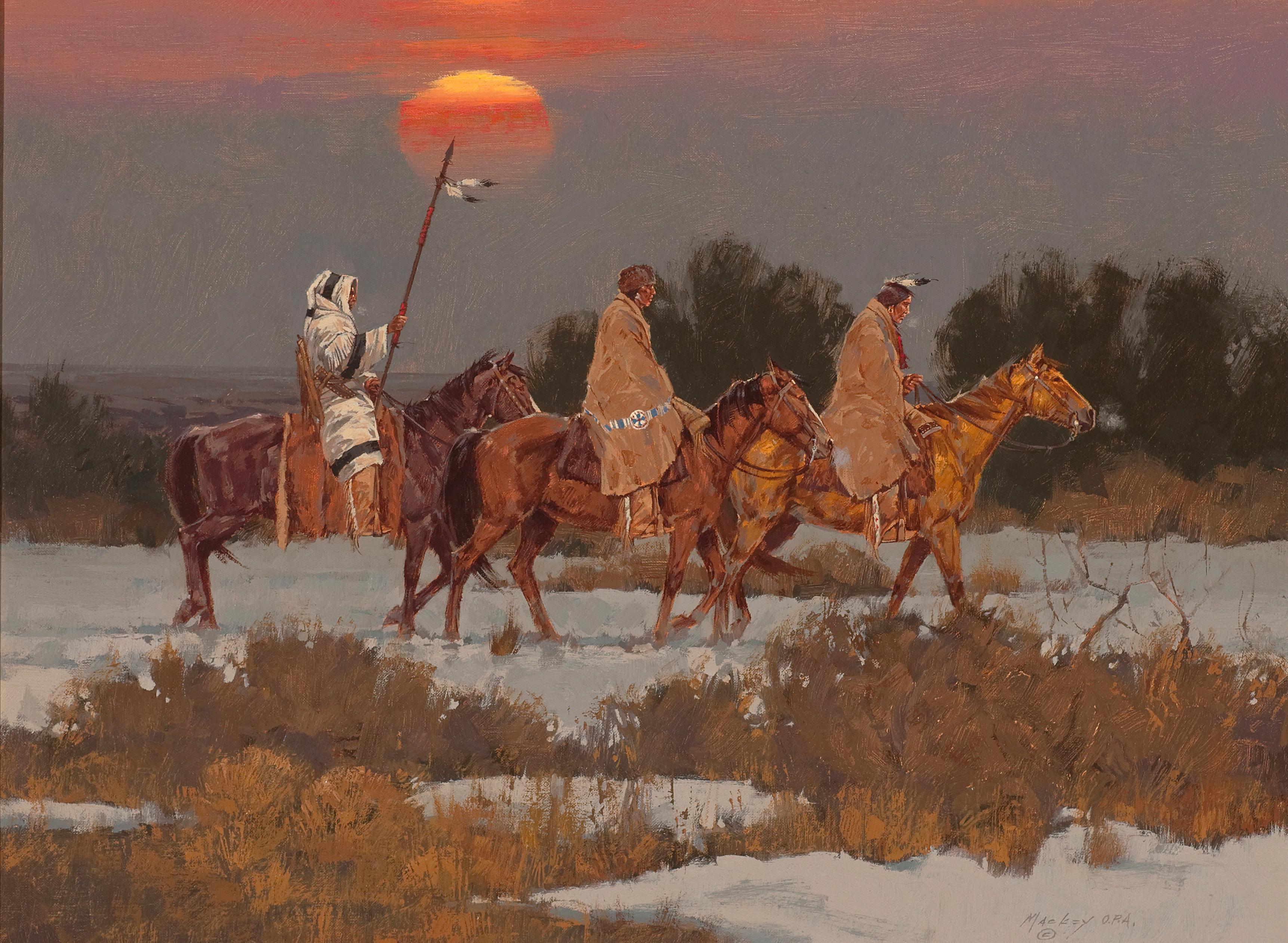
3 minute read
Kim Mackey
1953 - 0000
Growing up in Pueblo, Colorado, Kim Mackey always knew he would become an artist. “When I was a kid, I knew what I wanted to do—I wanted to paint. So, I would find the people that I admired and correspond with them. I was a pesky little kid, but they were kind enough to speak to me and give me some very good advice. Norman Rockwell encouraged me to go to art school, and in fact he was the one who pointed me in the direction of illustration,” remembers Mackey. He also credits his parents with being very supportive of his interest in art for as long as he can remember. “I must say that both of my parents were always very encouraging, my mother especially. When I was four years old, she bought me my first set of oils. She was the one who really exposed me to art galleries. I remember as a kid waking up in the morning and she’d ask if I wanted to go to Taos. We’d drive down to New Mexico and make a day of seeing the galleries.”
Mackey’s talent won him a scholarship at the Colorado Institute of Art in Denver, where he studied illustration. For several years after art school, he worked as an illustrator on assignments for True West, Western Horseman, and Capitol Records. In addition to working as a commercial illustrator, Mackey took courses at Colorado State University in order to qualify for certification as a police-sketch artist. “It was emotional because you were right in the middle of people’s misery, but it taught me a lot about character. It taught me how to talk to people and how to empathize. It taught me that life is fleeting and you better value every minute,” recalls Mackey.
The Western subjects that Mackey is best known for today were not his primary focus early on. But, that changed one day when a gallery owner sold the last of Mackey’s paintings and called for more. “All I had was a little painting of a horse and a rider,” recalls Mackey. “When I brought it over, he said, ‘Wow, I didn’t know you did this.’ To me, ranching was just something I grew up with. I took it for granted. The gallery immediately sold the painting and asked for more. Soon I had collectors asking for them.”
When he decided to pursue being a fine artist full-time, Mackey remembered the advice Western artist Olaf Wieghorst had given him. “He told me to stay on track, paint what appealed to me, and paint what I knew,” says Mackey. “I come from a long line of pioneer cattlemen,” says Mackey. “My great-grandfather was a rancher. He homesteaded a place in southeastern Colorado that’s still in the family. There aren’t many family ranches that can trace their roots back that far. When I was a kid I worked on that ranch in the summertime. I did really glamorous things like stacking hay and waking up at five in the morning to go brand cattle. As a kid, it was nothing but hard work. But when I reflect back on it, that’s where I draw a lot of my inspiration. I think it’s in the genes.” Today, Mackey lives and works in Pueblo. His brother owns a ranch nearby. His brother and friends working the ranch, like generations of their family before, are the subjects of many of Mackey’s paintings.
Mackey is also drawn to the Pueblo Indians as subjects for many of his paintings. “The landscape and the Native Americans I paint are from northern New Mexico. They are indigenous to this part of the country, and they have a unique and picturesque lifestyle that has always had appeal not only to me but to the early artists who painted here.”Often his paintings are night scenes. “A full moon does something to a landscape that is very intriguing,” says Mackey. “It’s mysterious and tranquil. There is something about the color, composition, and mood that makes me want to see if I can put it down on canvas and convey the feeling that I had to the viewer.”
TIME OF THE WOLF Oil on Canvas 18 x 24 1⁄8 inches










